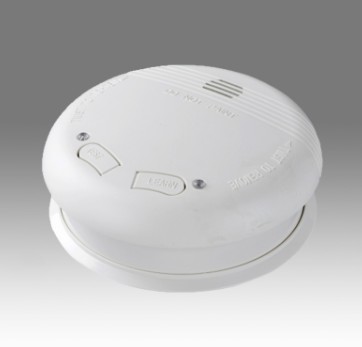Wireless online smoke alarms represent a significant ad […]
Wireless online smoke alarms represent a significant advancement in fire safety technology, revolutionizing home protection by enhancing the effectiveness and convenience of traditional smoke alarms. These smart devices utilize wireless connectivity and online capabilities to provide homeowners with real-time notifications, remote monitoring, and improved overall fire safety.
Here are some key ways in which wireless online smoke alarms are shaping the future of fire safety:
Real-time alerts: Unlike traditional smoke alarms that rely on audible alerts within the home, wireless online smoke alarms can send immediate notifications to homeowners' smartphones or other connected devices. This enables residents to be alerted to potential fire incidents even if they are not at home, allowing for a quicker response and potentially preventing further damage.
Remote monitoring: Wireless online smoke alarms can be monitored remotely through mobile apps or online platforms. Homeowners can check the status of their smoke alarms, receive regular updates, and even perform system tests from anywhere, providing peace of mind and ensuring the ongoing functionality of their fire safety system.
Enhanced communication: Wireless online smoke alarms can communicate with each other within a network, forming a comprehensive fire safety system. When one alarm detects smoke or fire, it can trigger all other connected alarms in the home, providing immediate alerts throughout the entire property. This interconnectedness significantly improves the chances of early detection and rapid response to a fire event.
Integration with smart home systems: These smoke alarms can integrate seamlessly with other smart home devices, such as security systems, cameras, and voice assistants. This integration allows for a more comprehensive home protection system, where smoke alarms can trigger other devices in case of an emergency, alert security services, or provide real-time video footage to homeowners.
Data collection and analytics: Wireless online smoke alarms can collect and analyze data related to smoke levels, temperature, and other environmental factors. This information can help identify patterns, improve fire safety algorithms, and provide valuable insights into potential fire risks. These data-driven features contribute to more effective fire prevention and mitigation strategies.
Maintenance and monitoring: Traditional smoke alarms require manual checks and periodic battery replacements, often leading to neglect or oversight. Wireless online smoke alarms can perform self-diagnostic tests, monitor their battery levels, and alert homeowners when maintenance is required. This proactive approach ensures that the smoke alarms are always operational and reduces the chances of malfunction during critical moments.
Integration with emergency services: In some cases, wireless online smoke alarms can be directly linked to local emergency services. When an alarm is triggered, it can automatically alert the fire department, providing crucial information such as the location of the incident and the type of emergency. This integration streamlines the emergency response process, reducing response times and potentially minimizing fire damage.
In conclusion, wireless online smoke alarms represent a significant leap forward in fire safety technology. Their real-time alerts, remote monitoring capabilities, and integration with other smart home devices make them an invaluable tool in protecting homes and saving lives. As technology continues to evolve, we can expect further innovations in fire safety to enhance our ability to prevent, detect, and respond to fire incidents effectively.